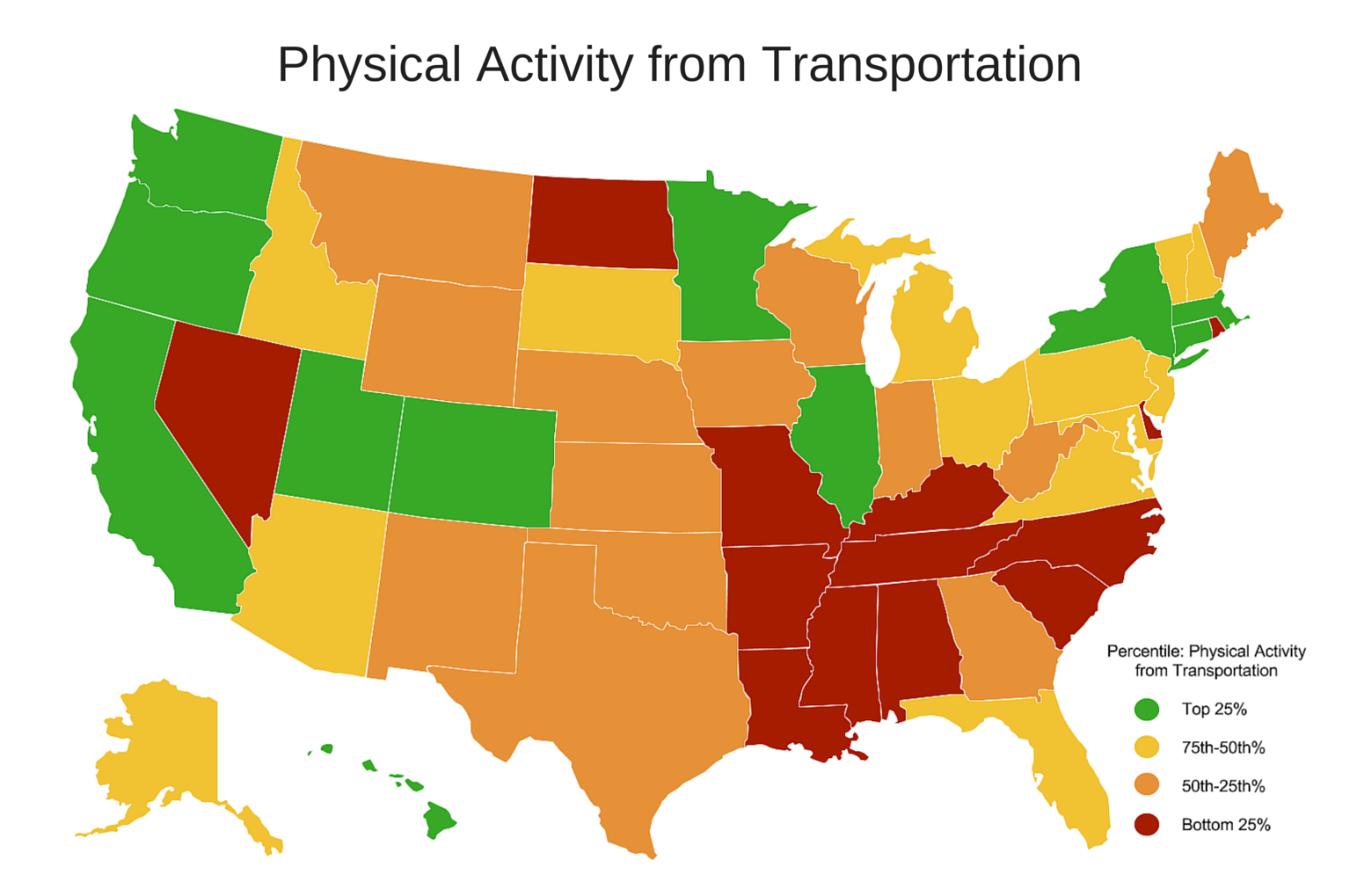Transportation policy is health policy
While transportation is often just thought of as how we get from point A to point B, the way we choose to do so can have important consequences on our physical health, air quality, safety, the development of our cities, and how we interact within them.
While transportation is often thought of as how we get from point A to point B, the way we choose to do so can have important consequences on our physical health, air quality, safety, the development of our cities, and how we interact within them.
Recently, the U.S. Department of Transportation and Centers for Disease Control and Prevention released a new tool that focuses on just that – “how the transportation environment affects safety, active transportation, air quality, and connectivity to destinations” in cities and states across the country.1
This new Transportation and Health Tool, allows one to compare states or metro areas using any number of different metrics including “commute share by car,” “use of federal funds for bicycle and pedestrian efforts,” and “physical activity from transportation,” among others.
Below, we looked at one metric, physical activity from transportation, which measures the percentage of all trips made by foot or bicycle that are at least 10 minutes long. The states in green show places where people are taking greater advantage of active forms of transportation like biking and walking, largely because they have more options available to them to do so. Today, less than half of Americans across all ages get the recommended level physical activity each week which has impacts on public health overall. If you look at the rankings of states based on their overall health, the 10 unhealthiest states also rank in the bottom half of states based on physical activity from transportation.2

While overall health is dependent on a number of factors, physical inactivity is a significant factor, and the amount (or lack) of activity one gets during trips can contribute to overall health. By improving public transit, biking, and walking options in these states, while shifting the emphasis from road expansion to road repair, we can increase physical activity levels and thereby improve public health.
Now, more than ever, it is important we do so.
While there are certainly some states that are doing better than others, every state can do more to encourage forms of transportation that improve public health. For instance, while New York ranks highest on physical activity from transportation and Arkansas ranks lowest, both can do more as states to make its streets accessible to bikers and walkers, and to make public transit a convenient and efficient way to get around. More sidewalks, bike lanes, and pervasive public transit is essential.
When planning and selecting transportation projects, it’s important to keep more than just the starting point and destination in mind. The systems we choose to promote can have a large impact on our physical health. Transportation policy is health policy.
If you’re curious about how your state or metro area compares to others, check out the online tool here.
1U.S. Department of Transportation, “Transpiration and Health Indicators.”
2America’s Health Rankings, “2014 Annual Report – Highlights.”